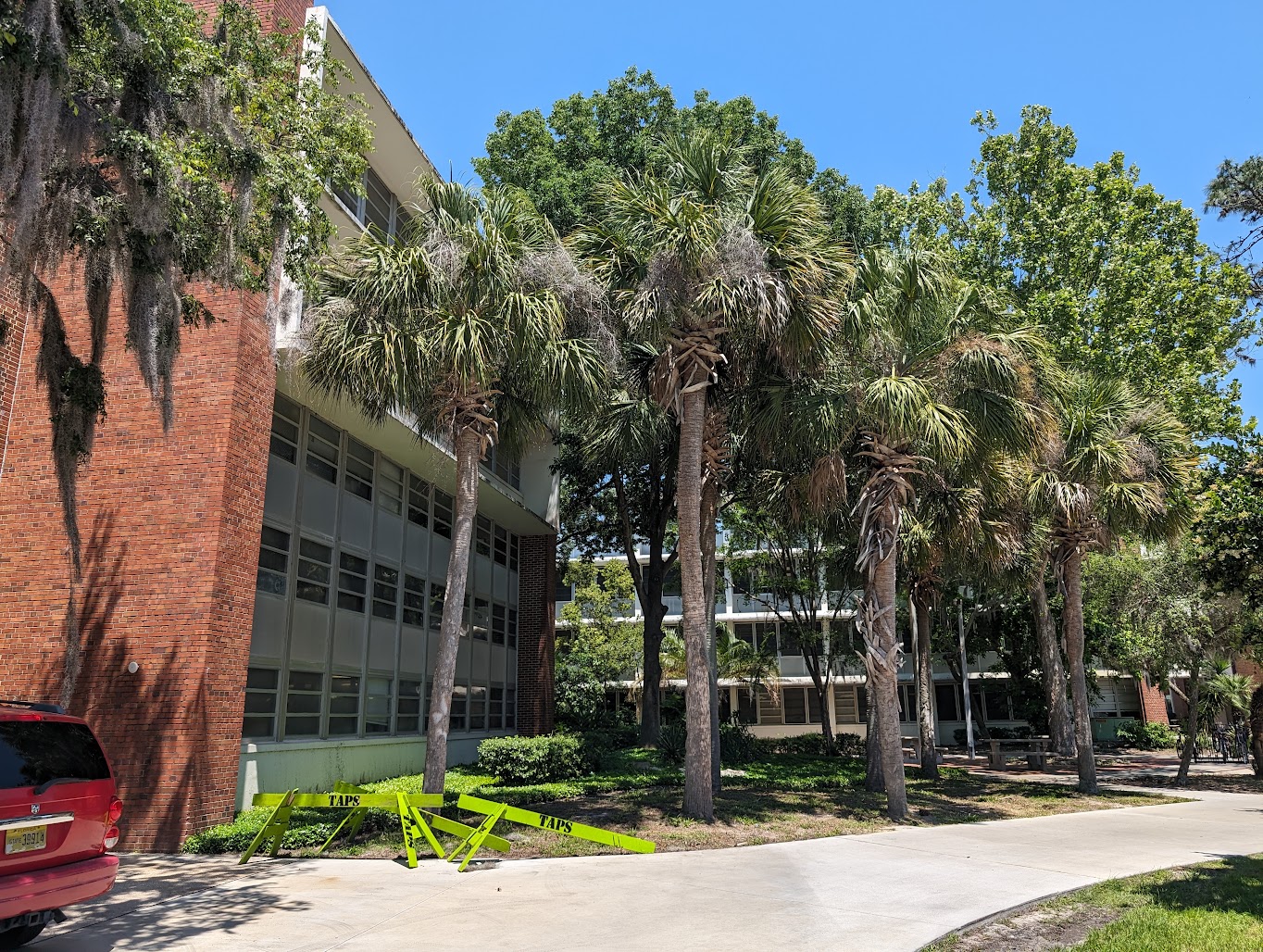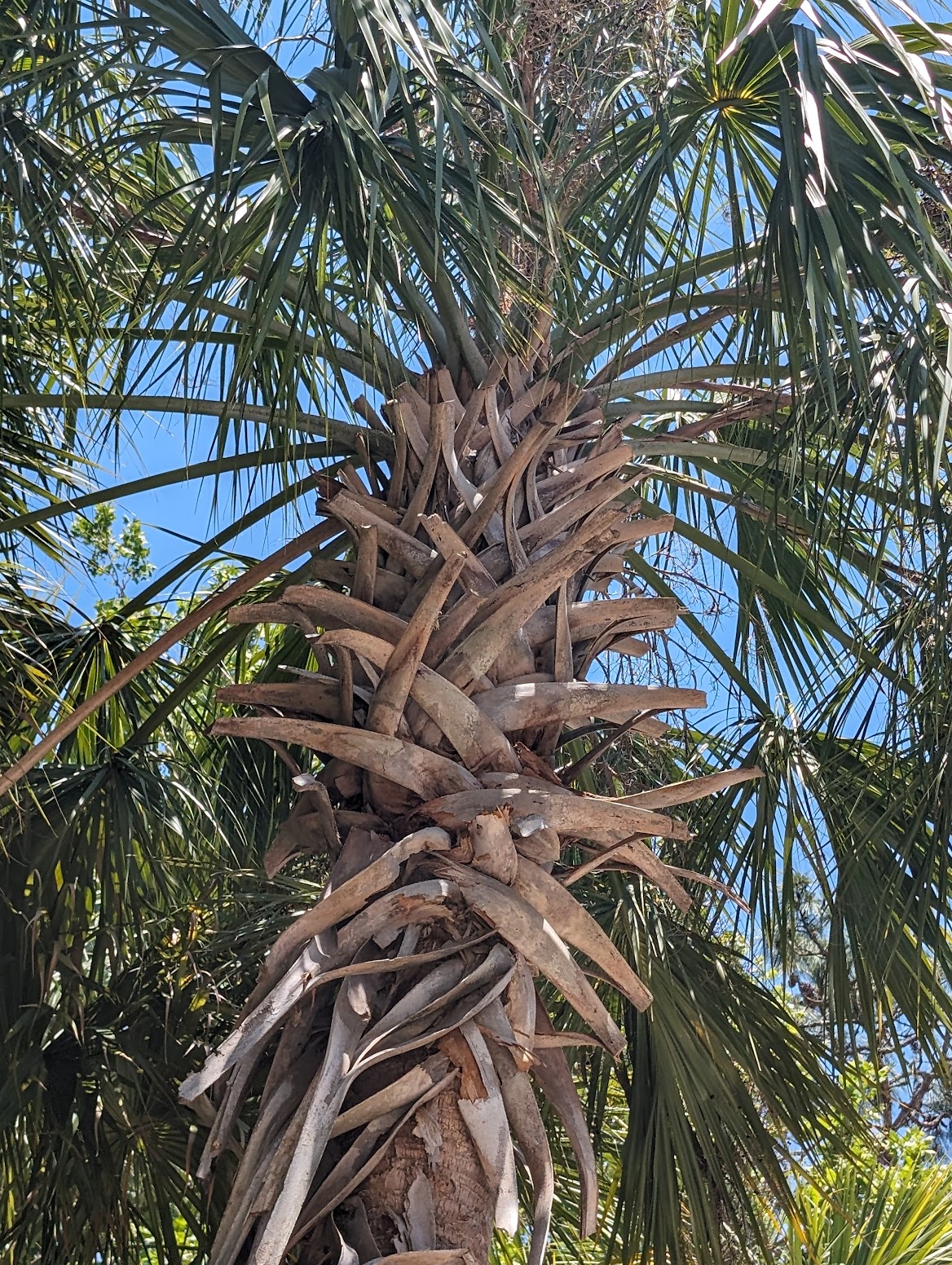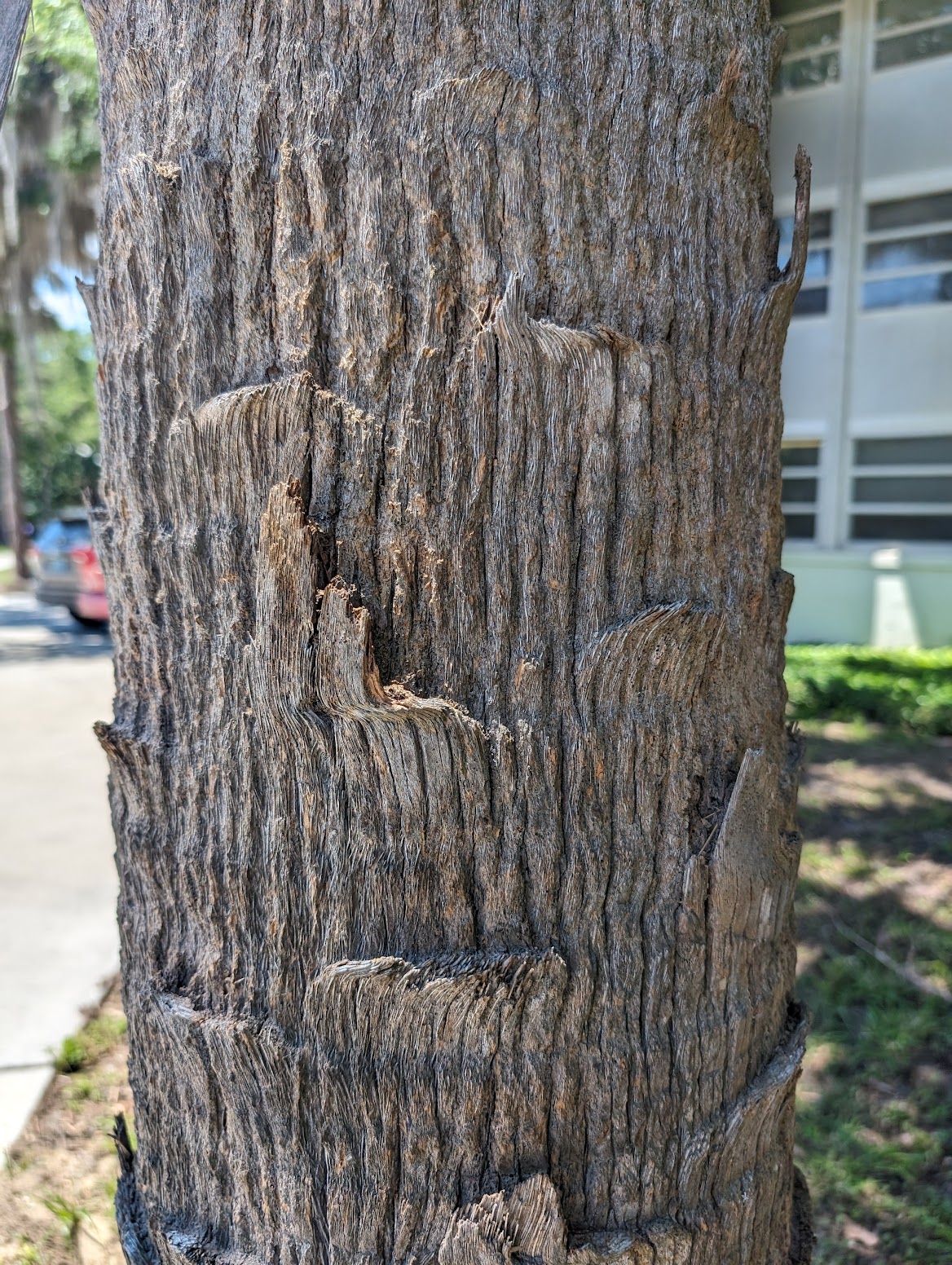Arecaceae – Palm Family
In 2024, this sabal palm measured 32.5 feet tall and had a diameter of 14 inches. Based on USDA Forest Service models, it will absorb approximately 165.5 lbs. of carbon over the next 20 years. Put simply, this tree alone will offset up to 670 miles worth of carbon dioxide.
See all species on our Campus Tree Tour.
Introduction
Sabal palm, the Florida state tree, is one of the most prevalent palm species of the Southeastern United States. Known for its long lifespan, the palm has a single fibrous trunk topped with broad, fan-like leaves. Sabal palms are highly valued in landscaping as they are resistant to hurricane-force winds and offer refuge for animals. They also have cultural significance to indigenous tribes who rely on them for subsistence.
Physical Description
Life expectancy: 100+ years
Height: 30-80 feet
Crown: 10 feet
Diameter: 12-24 inches
Bark: Grey, rough and fibrous. Some have leaf bases called “boots” attached to the tree.
Leaves: Evergreen and fan-shaped fronds (3-4 ft long). Fronds are curved or costa-palmate, meaning the stiff midrib extends the entire length of the frond, giving it a slightly folded appearance. Petioles, or leaf stalks, are 3-6 feet in length.
Flowers: Creamy to yellowish white and extremely showy and fragrant. Flowers (0.125 inches) are born in clusters 5-8 feet long from April-August.
Fruits: Black drupes (1/4 – ½ inch in diameter) that resemble berries. Fleshy with a hard brown spherical seed in the center.
Key Identification Characteristics: Large fan-like leaves with costa-palmate midrib, single straight trunk, boot presence may vary
Past and Present Uses
The sabal palm has significant cultural value to indigenous groups, such as the Seminole and Miccosukee tribes. The palm has been traditionally used for everything from food to housing. The hearts of palms were boiled or eaten raw, and the fruits and seeds were ground into flour. The fronds were used as thatching for roofs, side paneling for housing, and for weaving material to create tools such as baskets and nets. The sabal palm was also used by colonists to support forts since its fibrous wood prevented splintering when struck by cannon fire.
Presently, sabal palms are significant to the urban landscaping industry, while their fronds are shipped worldwide for Palm Sunday and their flowers are used to produce dark amber honey.
Ecological Importance
Origin: Native to the United States
Native Range: Found from throughout Florida up to South Carolina (Figure 1).

Figure 1. Native range of Cabbage Palm. Photo credit: U.S. Department of Agriculture
Sabal palms are an important species in many Floridian environments. They are a primary component of hydric hammocks, pineland ecosystems, and even coastal hammocks. In the northernmost range, sabal palms are naturally found within 12 miles of the coastline. These trees typically grow around hardwoods such as live oaks, water oaks, laurel oaks, and lobolly pines.
Live palms, even with dead fronds, serve as nesting habitat for bats and small birds. Flowers and fruit are important for pollinating insects and birds, while the boots and bark can serve as habitat for ferns and orchids in hydric hammock ecosystems.
More Information
https://edis.ifas.ufl.edu/publication/ST575
References
Broschat, T. K. (2018, January 31). Enh-733/ST575: Sabal Palmetto: Sabal or cabbage palm. Ask IFAS - Powered by EDIS. https://edis.ifas.ufl.edu/publication/ST575
Florida Association of FANN. (n.d.). Sabal palms, the State Tree of Florida. https://www.plantrealflorida.org/info/wp-content/uploads/2013/05/sabal_palm_trim2pg_apr2013.pdf
Godfrey, R. K., & Darst, M. (1988). Trees, shrubs, and woody vines of northern Florida and adjacent Georgia and Alabama. University of Georgia Press.
i-Tree. (2006). Tree tools - calculate the benefits of trees!. i-Tree. https://www.itreetools.org/
Lady Bird Johnson Wildflower Center. (2015, July 22). Plant database. Lady Bird Johnson Wildflower Center - The University of Texas at Austin. https://www.wildflower.org/plants/result.php?id_plant=sapa
Wade, D. D., & Langdon, O. G. (n.d.). Cabbage Palmetto. Sabal palmetto. https://www.srs.fs.usda.gov/pubs/misc/ag_654/volume_2/sabal/palmetto.htm
Wildlife - species. SCDNR - Species: Cabbage Palmetto. (n.d.). https://www.dnr.sc.gov/marine/mrri/acechar/speciesgallery/Plants/CabbagePalmetto/index.html



